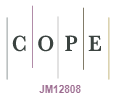Session 2. Oral Presentation for: Innovative design and re-completion strategies for CO2 injection wells: a case study
T. Ahmad A *A

Toseef Ahmad is a Senior Completion Engineer with over 15 years of experience in the oil and gas industry. He specialises in the design and execution of well completions and related services, with extensive experience across the Middle East, West Africa, Southeast Asia, and Australia. His expertise spans onshore, offshore, and unconventional reservoirs, including shale and coal seam gas. Toseef holds a BSc in Petroleum Engineering from U.E.T, Lahore, and a MSc in Project Management from Curtin University. He has authored several SPE papers on sand control and stimulation. Currently, he serves as the Project Manager for fracture stimulation operations in shale gas development in the Beetaloo Basin, Northern Territory. |
Abstract
Presented on 27 May 2025: Session 2
This paper presents a case study on the innovative design and deployment of well completion for a CO2 injection well. Over 5 years, the well was completed twice to conduct various CO2 injection experiments across different formations. The paper discusses the design, technology, and procedures used to meet challenging well-completion requirements. One challenge involved external fibre optic cables installed on the casing using blast rods. To avoid damaging these cables, a wireline-oriented gun system that reads flux from the rods was used to orient the perforation charges away from the cables. Additionally, downhole formation samples were collected without requiring a well workover, achieved using Tube-in-Tube U-Tube sampler technology. To reduce costs, the well design utilised 13% rather than the 25% chromium stainless steel material typically recommended for CO2 injection wells. The recovered tubular showed a favourable corrosion profile during re-completion, supporting the design decision. The well was re-completed in 2024, incorporating design optimisations and lessons learned from the initial completion. The re-completion targeted new low-permeability zones, requiring perforation cleanup to enhance injectivity. An innovative method using inflatable packers and nitrogen to displace and flow the well inside the tubing achieved this objective, significantly reducing costs compared to a full flow-back package. The paper emphasises tailored engineering solutions for complex well construction, demonstrating the effectiveness of specific tools and materials in optimising well design and contributing to best practices for future carbon capture and storage well completion applications.
To access the Oral Presentation click the link on the right. To read the full paper click here
Keywords: carbon capture and storage (CCS), CO2 injection well, fibre optic monitoring, oriented perforation, U-tube sampler, wireline perforating platform (WPP).
 Toseef Ahmad is a Senior Completion Engineer with over 15 years of experience in the oil and gas industry. He specialises in the design and execution of well completions and related services, with extensive experience across the Middle East, West Africa, Southeast Asia, and Australia. His expertise spans onshore, offshore, and unconventional reservoirs, including shale and coal seam gas. Toseef holds a BSc in Petroleum Engineering from U.E.T, Lahore, and a MSc in Project Management from Curtin University. He has authored several SPE papers on sand control and stimulation. Currently, he serves as the Project Manager for fracture stimulation operations in shale gas development in the Beetaloo Basin, Northern Territory. |


